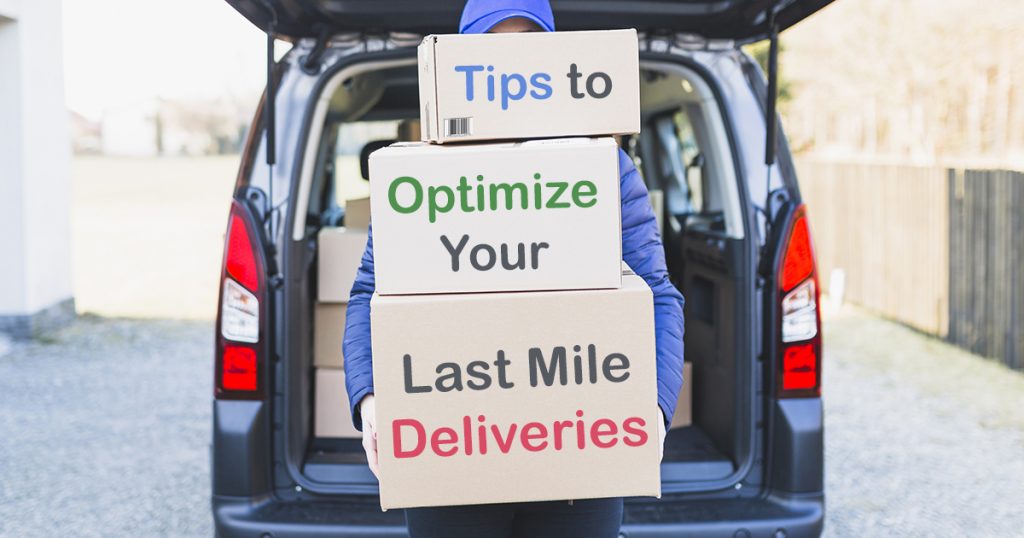
If you are in the business of delivering goods last mile, then optimizing your deliveries is vital. If you do not optimize your delivery process, it can cost more money and time than necessary, ultimately affecting customer service levels. To help improve efficiency in the final mile logistics process for businesses, we have compiled six tips to increase your deliveries efficiency.
1. Determine how quickly the goods must arrive
The majority of businesses overestimate how quickly their products need to arrive. If the customer does not receive it as soon as expected, they may feel like you do not care about them and will not be interested in using your services again. However, a study done by the University of Southern California found that customers were willing to wait less than an hour for a package. If it will take longer, businesses should communicate with their customer and provide them with status updates on when they can expect the delivery.
2. Include order tracking data
If a customer is expecting a delivery, they will want to know precisely when it comes. The last mile logistics should provide order tracking information that can be accessed online or through text message updates, so the customer knows exactly where their package went and how long until it arrives at its destination. Estimates of arrival time are not perfect. They rely on weather conditions, traffic patterns, and other factors out of your control, so your expected ETA for each location may change from what you promised initially. In this case, make sure to update the status as soon as possible to avoid confusion among your clients.
3. Enhance supply chain procedures visibility
Suppliers, buyers, and logistics service providers are all linked through a network. All connected parties can learn about the delivery process from the data, allowing them to know if something unusual is going on, such as a traffic jam or a journey that isn’t working well. Use such data to your advantage and plan out for worst-case scenarios to be on top of every situation when something happens.
4. Provide a hospitable customer service
Doing last mile logistics correctly leads to repeat business and loyal customers, but final mile processes involve more than just a truck and driver. Give customers plenty of ways to contact you before an order needs clarification/resolution. This includes having email addresses with your company’s name in them, phone numbers on the site, making sure that packages arrive within promised timeframes. Customers do not want to feel like they are bothering your team when there is an issue or question. Show you care by giving them ways to get in touch quickly.
5. Use technology to create and optimize driver routes
GPS systems help transportation executives keep track of trucks at all times and ensure drivers follow the expected route. In addition, communication between vehicles and dispatchers can be improved to notify drivers about traffic problems and provide alternate routes to keep deliveries on schedule.
6. In order picking processes, mispicks should be avoided
It’s time to revamp your warehouse layout and invest in materials handling equipment that can improve production. For example, labeling containers on storage racks aids pickers in quickly determining which items to collect. With modern pallet racking, pickers can carry out more items per hour and move faster. The contact between the legs of the worker is also less abrupt, which reduces strain on his back. Pickers are therefore less tired and sharper since they can reach their full capacity with reduced walking time.
Long Term Benefits of Optimization
Logistics Optimization enables businesses to improve their competitive advantage by providing the best customer experience possible. By optimizing processes, companies can increase sales and decrease costs while gaining a higher ROI. Often, these benefits are not realized until after an optimization project is executed, but once achieved, they become the foundation of your logistics company’s success.
SEE ALSO:
